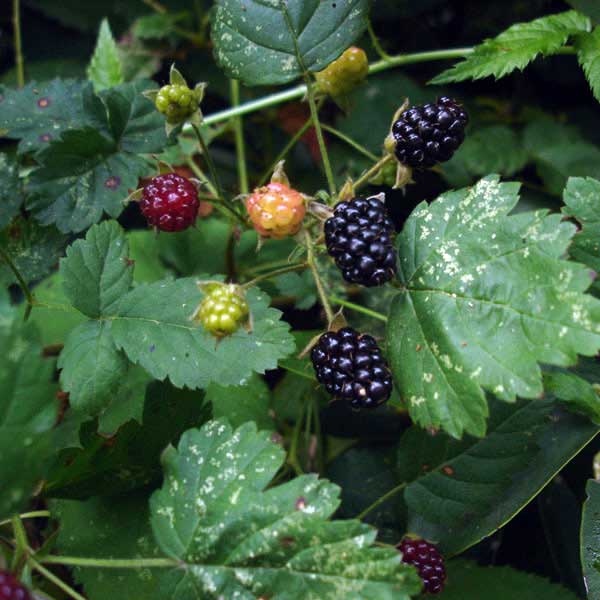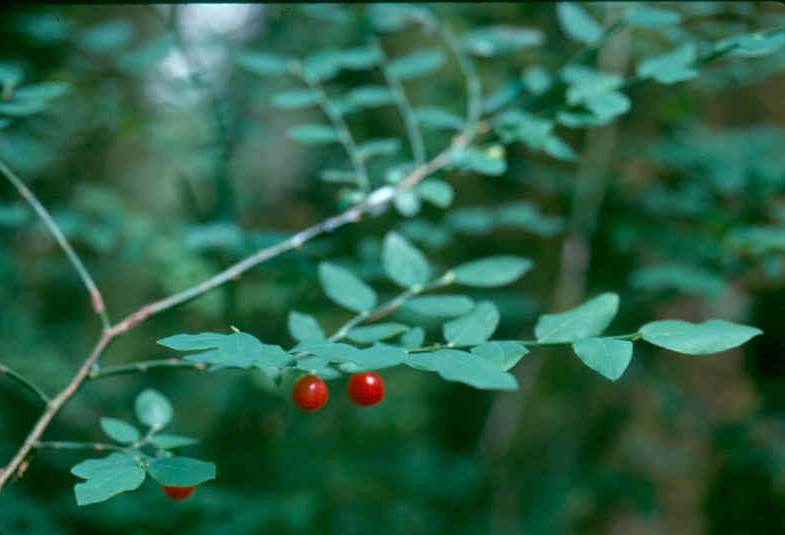We’ve posted before about the native vs. nonnative conundrum, especially as it relates to invasive species. So let’s complicate the issue a bit more by considering how birds are affected by our landscape choices.
About 10 years ago my UW colleague Sarah Reichard and I collaborated on a literature review on the interaction between birds and non-native plants. While we know that invasive plants can displace native plants and create less biodiverse environments, the resulting impact on species like birds is not so cut and dried. And what about noninvasive, nonnative plant species? How do they affect bird populations? Here are some of the practical bits of information that we found:
1) Nonnative shrubs and trees are often chosen for their brightly colored fruits, especially those that produce them in a different season than native plants. Winter color is highly valued by gardeners.
2) Frugivorous birds (those that eat fruit) generally benefit from the introduction of fruiting species as an additional food source, even if the species is invasive.
3) Birds tend to prefer fruits that are red and/or black, or that have red arils or pseudoarils.

4) Birds tend to prefer fruits that offer the most pulp; interestingly, highly invasive plants species tend to have larger fruit displays and therefore higher bird usage than less invasive relatives.
5) Additional food sources can allow frugivorous and omnivorous birds to expand their ranges and/or their breeding seasons.
6) Nonnative shrubs and trees with structural features such as thorns and spikes can provide protection to small birds from predators.
It’s clear that birds are highly adaptive and will quickly learn to utilize new food resources – and in doing so, may contribute to their spread through seed dispersal. It’s enough to make your head spin.
Here’s what I recommend for choosing bird-friendly trees, shrubs and vines:
1) Use native species first if they are adaptable to your site conditions. (Note: many native species, especially those of forested environments, don’t like urban conditions.)
2) Be sure to provide structural diversity in your landscapes – groundcovers, small dense shrubs, larger open shrubs and small trees, big trees, and vines – to provide shelter and nesting habitat.
3) Before choosing nonnative species, check the web for information on invasiveness. The USDA Plants Database (http://plants.usda.gov/) has information on invasive species. If it’s invasive, please don’t plant it!
4) Birds see best in the red end of the color spectrum, so select plants with fruits and flowers that will attract them.

The plot thickens! What about invasive birds? Starlings anyone? Should we introduce non-natives that may attract a new bird species that will displace a native bird species via any one of multiple strategies? Inquiring minds want to know.
Tim, that is in another part of the article! Yes indeed, nonnative plants can increase the presence of nonnative birds, leading to decreases in native birds. It is a tangled web!
Bird dispersal is responsible for a lot of weed spread. The only thing I’d like to say with regards to this article is that if you’re going to use exotics to attract birds be very careful what species you select, especially if you live in an area bordering state or national parks that have high quality remnant vegetation communities. Urban gardeners need not be so discerning with their species selection, but it’s always good to be mindful of weed potential (and birds can carry seed a long way).
Very interesting topic and something to think about! It’s always gray, never black and white.
Great post!
I just linked to it from the National Extension Master Gardener blog at https://blogs.extension.org/mastergardener
Research is showing that some non-native berries do not offer the proper nutrition that native wildlife, especially birds, need for survival. For instance many Asian berries do not contain the high fat content that the native berries on the East Coast contain. The high fat content is crucial for long-distance travel over water that is required by some migrating birds. there are many other findings pertaining to the lack of bio-diverstiy due to dwindling native habitats and native plants, northern cardinal males having less bright plumage due to eating non-native berries that lack the proper pigments and nutrition, non-native plants altering habits of some bird species resulting in building nests lower to the ground and higher preditor attacks on their nest/chicks/eggs, etc. Planting regionally native plants is the safest and healthiest way to go. Plus, many bird species feed insects to their babies and insects reproduce on native plants, not on non-native plants. A balanced ecosystem is the way to go – more native plants, a large variety of plants, more insects for wildlife food and to help keep the plants in check. Go wild, plant native for the benefit of wildlife and native habitats.
Visit your local native plant society for more information on native plants in your region. Also, Doug Tallamy’s book “Bringing Nature Home” is an excellent resource with beautiful photos about the relationship of native plants, wildlife and insects.
Jan, I’d really encourage you to read the article I provided. Nature adapts, and birds adapt to nonnative foods. As you’ll note, I recommend native species first. But nonnative species are certainly better than nothing, especially if environmental conditions don’t support native options.